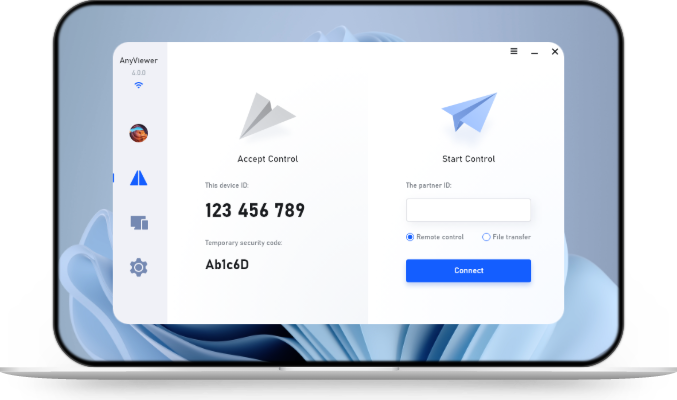Top 6 Free File Transfer Software
This article provides an in-depth look at the best free file transfer software, offering detailed insights into their features, benefits, and how to use them effectively for seamless file sharing.
Introduction
In an increasingly digital world, the need to transfer files quickly and securely has never been more critical. Whether you're a busy professional needing to send documents, a student sharing research, or just someone wanting to share photos with friends, finding reliable and free file transfer software can make all the difference. Imagine this: you’re at work, and you need to send a presentation to your colleague, but the file size exceeds email limits. Or you want to share holiday photos with family members without hassle. This is where free file transfer software comes to the rescue.
But why choose free options over paid software? Simple: many free tools provide essential features without sacrificing functionality. They often have user-friendly interfaces and enough versatility to cater to different needs, whether for personal or professional use. Let’s dive deeper into the world of file transfer solutions, explore the top options, and discover why they might just be what you’re looking for.
What is File Transfer Software?
File transfer software allows users to send digital files, such as documents, images, and videos, from one device to another. It’s designed to make file sharing fast, secure, and convenient. Whether you’re transferring files within a local network, across different devices, or even internationally, file transfer tools streamline the process.
There are different methods for file transfers, including:
- Cloud-based transfers: Upload files to a server, and the recipient downloads them from there.
- Peer-to-peer (P2P): Files are transferred directly between devices without a central server.
- File Transfer Protocol (FTP): A standard network protocol used to transfer files between client and server.
Why Use Free File Transfer Software?
Free file transfer software is a lifesaver for many. Not only does it help you save money, but it also offers flexibility. Imagine needing to send a large presentation at the last minute without having to sign up for a costly service. Free tools can come to the rescue, allowing quick sharing with just a few clicks. They also make it easy to collaborate with colleagues, friends, or family members without the barriers of subscription fees or complex setups. With various options available, you can find a solution that meets your specific needs without breaking the bank.
Benefits of Using Free File Transfer Software
Why should you opt for free file transfer software? Here are a few reasons:
- Cost-saving: As the name suggests, free file transfer software won’t cost you a penny, making it perfect for individuals and small businesses.
- Accessibility: Many of these tools are available across multiple platforms—Windows, macOS, Android, and iOS.
- Flexibility: Many free tools offer cross-platform support, making them versatile for various devices. This ensures you can share files regardless of whether you're using a laptop, desktop, or mobile device.
- Variety: There are plenty of options to choose from, each with different features, making it easy to find one that suits your needs.
Top Features to Look for in Free File Transfer Software
Before diving into the best software, let’s take a look at some of the features you should consider:
- Security: File transfers should be encrypted and use secure protocols (like HTTPS or SFTP).
- Speed: How quickly can the files be sent and received?
- File Size Limits: Free software often has limits on the size of files you can transfer.
- Compatibility: Does the software work across various devices and platforms?
- Cloud Integration: Some tools work seamlessly with cloud storage services, offering extra convenience.
Common Challenges with Free File Transfer Software
Despite the benefits, there are a few drawbacks to using free software:
File Size Limits
Most free tools cap the size of files you can transfer, making it tough for large projects.
Security Risks
Some free solutions might lack advanced security features like multi-factor authentication.
Compatibility Issues
Certain software may not support all devices or operating systems, especially older models.
How to Choose the Right Free File Transfer Software
With so many options available, choosing the right free file transfer software can be overwhelming. Here are some suggestions to assist you in making an informed decision:
Assess Your Needs
Start by evaluating your specific file transfer needs. Do you frequently send large files, or are you mostly sharing small documents? Understanding your requirements can guide your choice. For instance, if you often send videos, you may need software that supports large file transfers without restrictions.
Consider Performance and Compatibility
Look for software that performs well and is compatible with your devices. Check user reviews and ratings to get a sense of reliability before making your choice. Also, ensure that the software integrates well with the platforms you use regularly, such as email clients or cloud storage services.
Best Free File Transfer Software [6 Options]
Now that we understand what free file transfer software is and why it’s beneficial, let’s dive into some of the top choices available today:
Option 1. AnyViewer
If you're searching for the best free remote desktop software with file transfer feature, AnyViewer stands out as an exceptional choice for several reasons. Not only does it provide secure and seamless file transfers between devices, but it also removes the frustrating file size limits that many other free tools impose. Whether you're sharing a single document or an entire folder of high-resolution videos, AnyViewer can handle it all without compromising speed.
What truly makes it unique is its robust remote access feature, allowing you to not just transfer files, but also remotely manage and control other devices. This is particularly useful for IT support, remote work, or even helping a friend troubleshoot issues. With advanced encryption ensuring your data stays protected and cross-platform compatibility enabling use across Windows, Android, and iOS devices, AnyViewer is a comprehensive solution designed to boost productivity, facilitate collaboration, and provide convenience, making it a perfect option for both personal and professional use.
Pro:
- Effortlessly transfer files by accessing another computer.
- The user-friendly interface ensures ease of use.
- Secure transfers are guaranteed through encryption.
- Compatible with various operating systems.
- Features such as remote control, screen sharing, and remote PC management enhance functionality.
Cons:
- The speed is dependent on the quality of the connection.
Step 1. Start by downloading and installing AnyViewer on both your local and remote devices. In the "Log in" section, click on "Sign up" to create your account by providing the necessary information.
Step 2. Once you log in, your devices will automatically sync with your account.
Step 3. Ensure you are logged into the same account on both devices. On your local computer, select the remote device you wish to transfer video files to, and then click on "File transfer."
To establish unattended remote access, choose the "One-click control" option for connecting to another computer. This feature allows you to manage the remote device as if you were there in person. After establishing a connection, you can transfer files by selecting the "File" button located in the menu bar.
Additionally, for a seamless transfer experience, you can effortlessly drag and drop files from your local computer directly onto the remote device.
Step 4. The files from your local device will appear on the left side, while the files from the remote device will be shown on the right. To transfer files, simply select the files you want to send and either click the arrows or double-click the chosen files.
- ★Tips:
- To enhance transfer speeds, consider upgrading to a Professional or Enterprise plan.
Option 2. WeTransfer
WeTransfer is known for its simplicity. With just a few clicks, you can send files up to 2GB for free. You don’t need to sign up for an account, which makes the process even faster.
Pros:
- Easy to use
- No sign-up required for basic use
- Decent file size limit for free users
Cons:
- Limited to 2GB per transfer
- No file tracking features
Option 3. Send Anywhere
Send Anywhere lets you send files up to 10GB for free, making it a powerful option if you need to transfer larger files. It works across multiple platforms, including iOS, Android, Windows, and macOS.
Pros:
- Large file size limit (10GB)
- Available on multiple platforms
- Secure file sharing
Cons:
- Ads in the free version
- Slower transfer speeds compared to some other tools
Option 4. FileZilla
For users who need to manage FTP transfers, FileZilla is one of the best free options. It’s a powerful tool for users familiar with FTP servers and has been a favorite for years.
Pros:
- Open-source and free
- Supports FTP, FTPS, and SFTP
- Allows large transfers without file size limits
Cons:
- Learning curve for beginners
- Interface can seem outdated
Option 5. Google Drive
Google Drive is primarily a cloud storage solution, but its file sharing capabilities are top-notch. With 15GB of free storage, you can upload files and share them via links, making it a versatile option for both personal and business use.
Pros:
- Generous 15GB storage limit
- Integrates with Google’s productivity suite
- Secure file sharing
Cons:
- Storage shared with other Google services (Gmail, Photos)
- Requires a Google account
Option 6. Dropbox
Dropbox has been a popular file sharing tool for years, offering seamless file transfers and collaboration. The free plan gives users 2GB of storage, which can be used to send files and share folders.
Pros:
- Simple and intuitive interface
- Strong collaboration tools
- Works well for team projects
Cons:
- Limited to 2GB of storage on the free plan
- Storage upgrades can be costly
Conclusion
In conclusion, finding the best free file transfer software is crucial for seamless and secure file sharing. With options like AnyViewer, WeTransfer, and Send Anywhere, you can easily send files without incurring costs, making them ideal for both personal and professional use. This guide highlights key features, benefits, and considerations to help you choose the right tool for your needs. Whether you require large file transfers or simple sharing capabilities, the right free software can enhance your productivity and streamline collaboration in today's digital landscape. Choose wisely and enjoy hassle-free file transfers!

